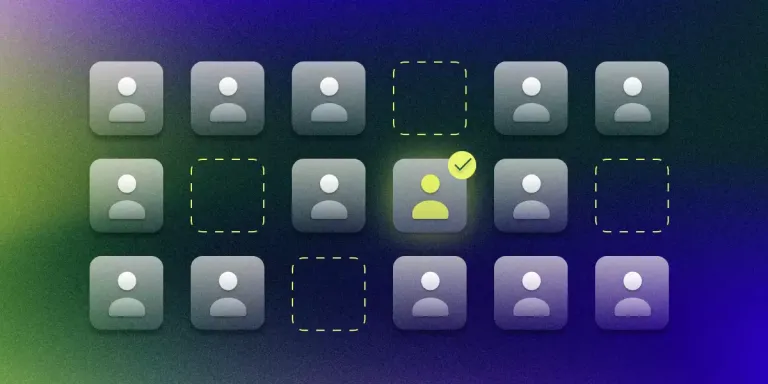Effective workforce planning cannot be overstated in the built world, where timelines are tight and margins even tighter. The workforce planning meeting is at the heart of this intricate puzzle of managing projects and people together. During this critical meeting, decisions that impact the success of current and future projects will be made.
Table of Contents
However, the effectiveness of these meetings hinges on one critical factor: preparation. Without it, you’re navigating a ship without a compass.
The consequences of poor preparation
Imagine walking into a meeting room, and instead of a focused discussion on strategic staffing decisions, the air is thick with confusion, frustration, and the tension of time slipping away unproductively. This is the reality of a poorly prepared workforce planning meeting. The consequences of which can be widely felt:
- Expensive wasted time: Every minute in a meeting is not spent on the job site or doing other productive work. When meetings are ill-prepared, wasted time is not just an opportunity cost but a direct financial loss.
- Inaccurate decisions: Decisions made on outdated or incomplete information can lead to staffing mismatches, under or over-allocation of team members, and ultimately, project delays or budget overruns.
- Frustration and confusion: Ill-prepared meetings reduce confidence in the planning process and the leadership responsible for it. The ripple effects can affect team morale and productivity long after the meeting has ended.
Key elements of effective preparation
The calm to the chaos of poorly prepared meetings is through thoughtful preparation. Here are the cornerstones of making your workforce planning meetings not just necessary evils but strategic assets:
Data hygiene
The bedrock of effective workforce planning is accurate, up-to-date data. This means having real-time insights into role vacancies and project needs, project timelines, and workforce allocations. In construction, where things change by the day, stale data is not just useless—it’s dangerous. Ensuring data hygiene means adopting systems and best practices that keep information current and accessible, enabling informed decision-making.
Crafting the right agenda
A well-crafted agenda is like having a GPS for your meeting—it outlines the journey, marks the key points of interest, and ensures everyone reaches the destination together. Starting with an overview of objectives sets the tone and aligns attendees. Breaking the meeting into segments (e.g., reviewing previous decisions, discussing current challenges, and planning for future projects) keeps the discussion focused and productive.
Case study: DeAngelis Diamond
DeAngelis Diamond, a Florida-based ENR top 400 general contractor, was bogged down by expensive, unproductive meetings. Noticing many Ops team members crowded around a whiteboard full of names, projects, and schedules, Brett Diamond, CIO and Principal at DeAnglies Diamond, knew a change was needed.
After implementing Bridgit Bench for workforce planning and using it as the driving force for workforce planning meetings, the team at DeAngelis Diamond was surprised to see how impactful accurate data could be and how many teams could benefit from it.
“We went in thinking this is going to cure our problem for workforce planning, but what we got out of it went into the realm of HR and talent recruiting. We can cross-reference job openings with Bench. I can look at the recruiting platform and see what the openings are. Then, I can go back to Bench and see where the projects are, what openings need to be filled, the accuracy of the data, and if we’re trying to hire too many or too few. The insights are beyond what we thought we were buying when we originally signed on.”
Check out DeAngelis Diamond’s full success story here.
Think your workforce planning meetings could be more productive?
Download our ebook to learn how to run efficient, effective workforce planning meetings with your team.
Tips for Maintaining Data Hygiene
Maintaining data hygiene doesn’t have to be a Herculean task. Here are some practical tips to keep your workforce planning data clean, current, and reliable:
- Regular updates: Schedule regular intervals (daily or weekly) for updating data. This ensures the information used in planning meetings is as current as possible.
- Use specialized software: Ditch the spreadsheets for specialized workforce planning software. These platforms are designed for the dynamic needs of construction projects and often feature real-time updates and integration capabilities.
- Assign “data stewards”: Designate individuals responsible for data accuracy and hygiene. This accountability ensures that data management is a continuous process, not an afterthought.
Tools for effective data management
The right tools can make data management a seamless part of your workflow. Here are a few to consider:
- Workforce planning software: Platforms like Bridgit Bench offer centralized data management, real-time updates, and forecasting tools tailored for the construction industry.
- Secure cloud storage: Use cloud-based services for storing and sharing documents and data. This ensures everyone has access to the same information anytime, anywhere.
- Dashboards and reporting: Visual dashboards and automated reporting tools provide insights into workforce allocations, project status, and upcoming needs, making your meeting preparation faster and more effective.
Preparation puts you in the driver’s seat
The key to successful workforce planning meetings lies in the preparation. You can transform these meetings from frustrating time sinks into strategic assets that drive project success by ensuring data hygiene, crafting a focused agenda, and leveraging the right tools. Remember, the goal is not just to plan for the workforce you have today but to strategically forecast and prepare for the projects of tomorrow.
As you refine your workforce planning approach, consider diving deeper into strategies and solutions that can further enhance your efficiency and effectiveness. Our comprehensive guide offers insights, tips, and best practices tailored to the unique challenges of the construction industry.



